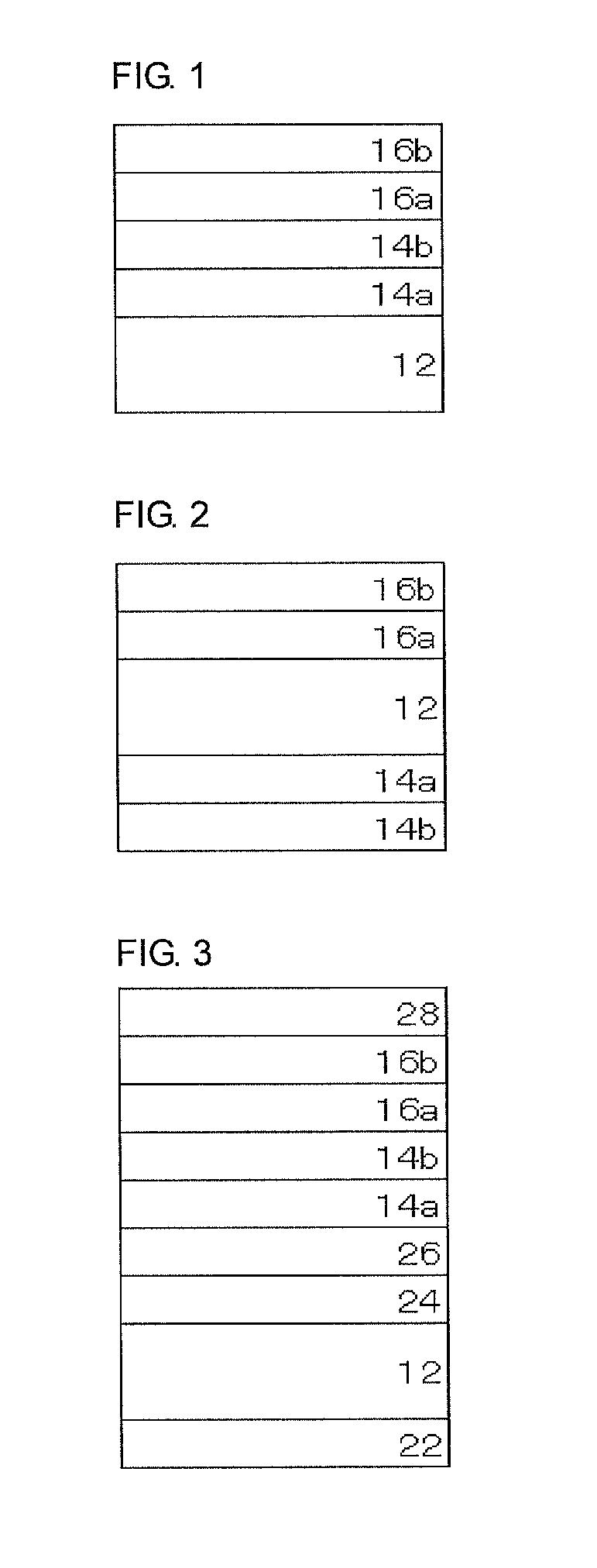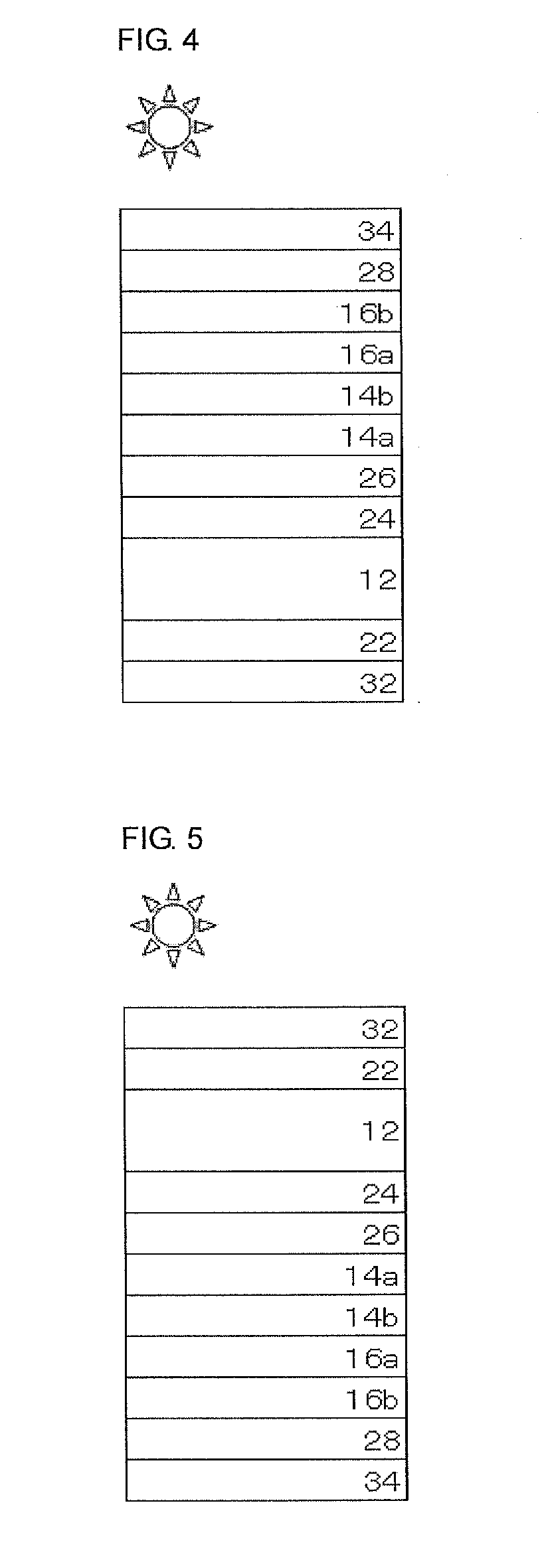Infrared light reflecting plate, laminated interlayer film sheet for laminated glass and its production method, and laminated glass
a technology of infrared light and film, which is applied in the direction of film/foil adhesives, instruments, optical elements, etc., can solve the problems of radio disturbance, high production cost, non-productive vacuum process, etc., and achieve high heat-shielding capability, improve selective reflectivity characteristic, and improve reflectivity characteristi
- Summary
- Abstract
- Description
- Claims
- Application Information
AI Technical Summary
Benefits of technology
Problems solved by technology
Method used
Image
Examples
example 1
[0168]Using the prepared coating liquids (R1), (R2), (L1) and (L2), an infrared light reflecting plate was produced according to the process mentioned below. As the substrate, used here was FUJIFILM's PET film (with no undercoat layer, having a thickness of 188 micro meters).
[0169](1) Using a wire bar, each coating liquid was applied onto the PET film so as to have a dry thickness of 6 micro meters, at room temperature.
[0170](2) This was dried at room temperature for 30 seconds to remove the solvent, and then heated in an atmosphere at 125 degrees Celsius for 2 minutes and thereafter at 95 degrees Celsius to form a cholesteric liquid-crystal phase. Next, using Fusion UV Systems' electrodeless lamp “D Bulb” (90 mW / cm), this was UV-irradiated at a power of 60% for 6 to 12 seconds, whereby the cholesteric liquid-crystal phase was fixed to form a film (light-reflective layer).
[0171](3) After this was cooled to room temperature, the above steps (1) and (2) were repeated, thereby producin...
example 2
[0173]An infrared light reflecting plate of Example 2 was produced according to the same process as in Example 1, for which, however, the order of the coating liquids in application was changed to (R1), (R2), (L2) and (L1).
example 3
[0174]An infrared light reflecting plate of Example 3 was produced according to the same process as in Example 1, for which, however, the prepared coating liquids (R3), (L3), (R4) and (L4) were used.
PUM
| Property | Measurement | Unit |
|---|---|---|
| reflection center wavelength λ1 | aaaaa | aaaaa |
| reflection center wavelength λ2 | aaaaa | aaaaa |
| ultraviolet-transmittance | aaaaa | aaaaa |
Abstract
Description
Claims
Application Information
 Login to View More
Login to View More - R&D
- Intellectual Property
- Life Sciences
- Materials
- Tech Scout
- Unparalleled Data Quality
- Higher Quality Content
- 60% Fewer Hallucinations
Browse by: Latest US Patents, China's latest patents, Technical Efficacy Thesaurus, Application Domain, Technology Topic, Popular Technical Reports.
© 2025 PatSnap. All rights reserved.Legal|Privacy policy|Modern Slavery Act Transparency Statement|Sitemap|About US| Contact US: help@patsnap.com



